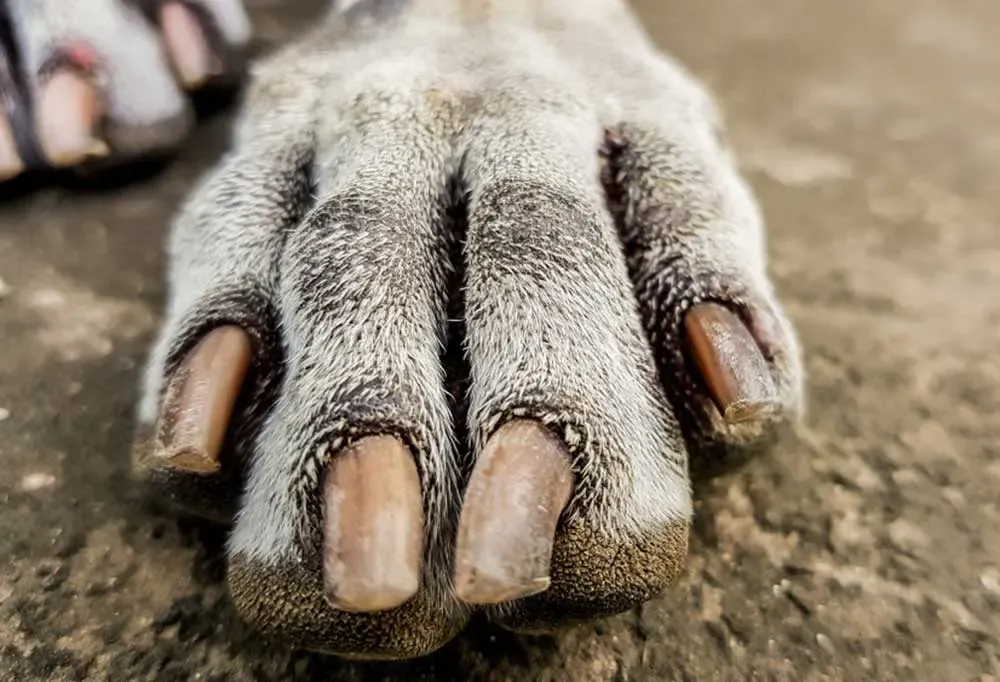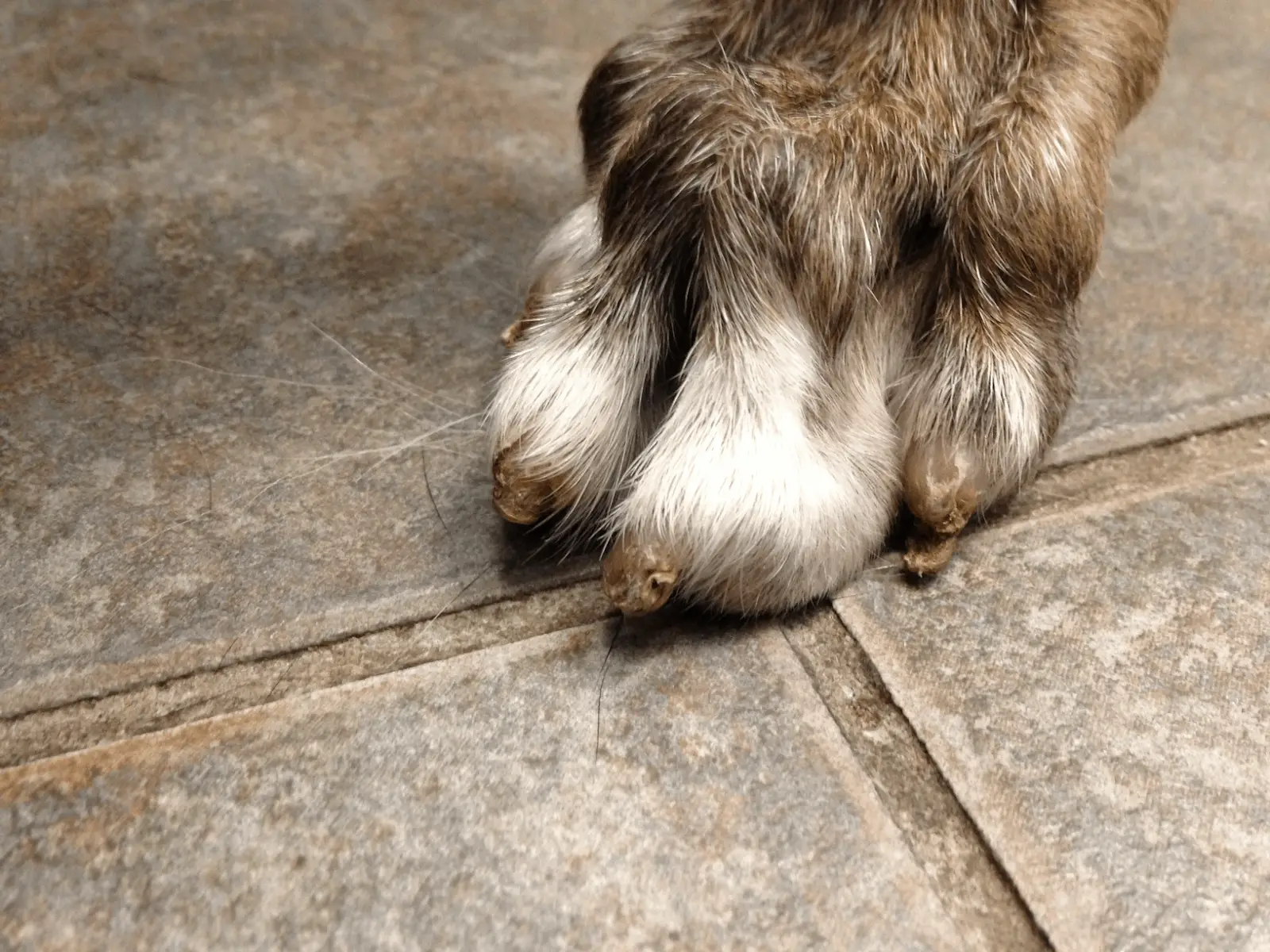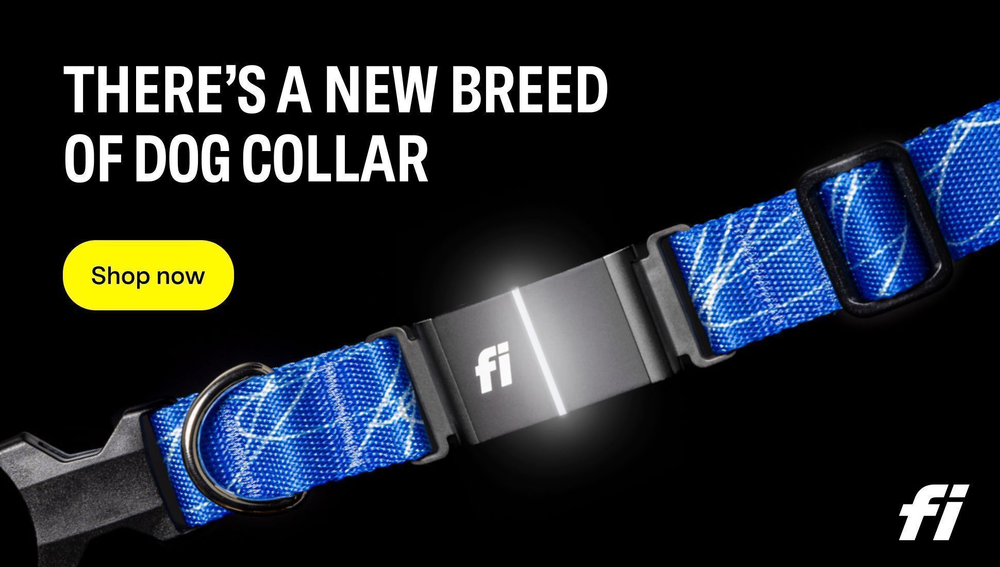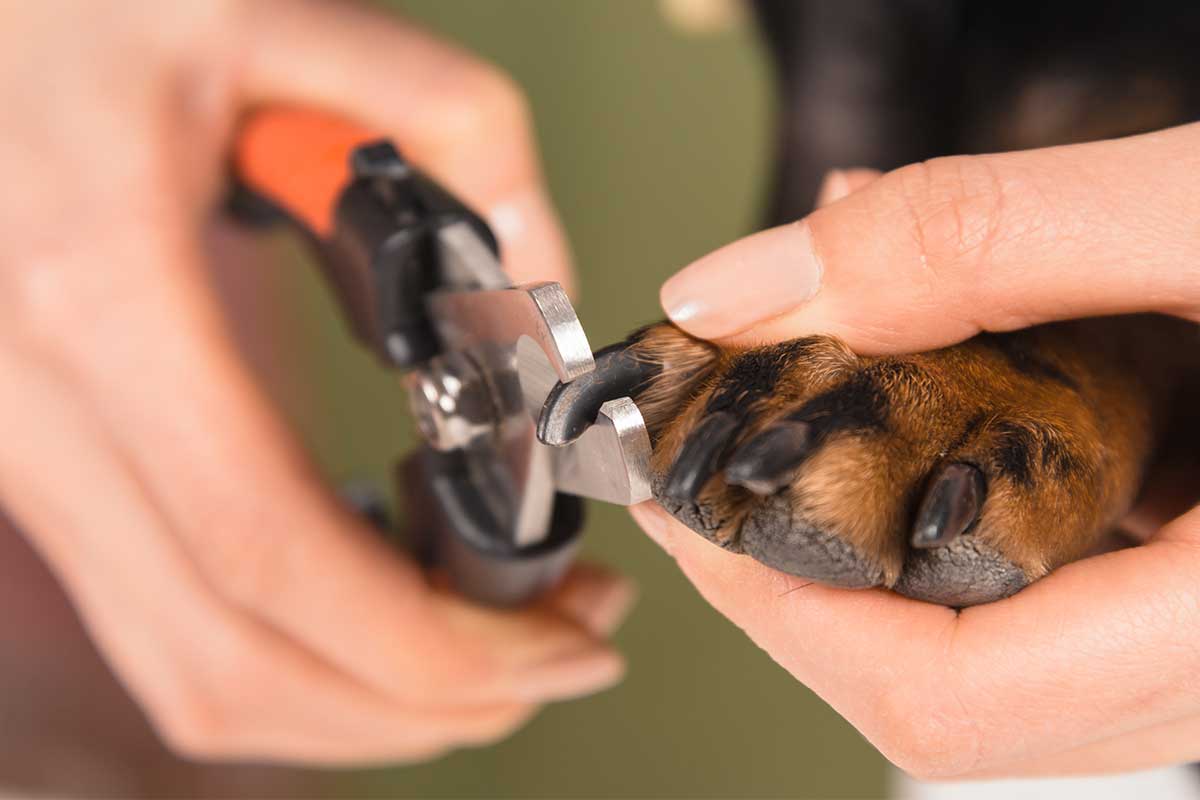Maintaining a dog's nail length is crucial for their comfort and health, yet the traditional method of clipping can sometimes be stressful for both pets and pet owners. Fortunately, there are alternative ways to keep a dog's nails short without the need for clipping. By employing regular activities and care practices that naturally wear down the nails, pet owners can avoid the clipper altogether.

One effective approach is to integrate nail maintenance into the dog's routine through regular walks on hard surfaces. Concrete and asphalt act as natural nail files as the dog moves, slowly grinding down the nails. Moreover, specialized dog toys and treats designed to promote chewing can also assist in naturally filing down a dog's nails when used consistently as part of their daily activities.
By a thoughtful combination of exercise, play, and appropriate dog care products, keeping a dog's nails at a healthy length is achievable without the use of clippers. These no-clip methods are not only less invasive but can also serve as a bonding time between dogs and their owners, contributing to the overall well-being of the pet.

Understanding the Anatomy of Dog Nails
Before examining the specific aspects of dog nails, it's important to understand two key components: the quick, which supplies blood to the nail, and the nail structure itself, which consists of a hard outer shell and a sensitive inner part.
Identifying the Quick
The quick is the sensitive, vascular part within a dog's nail that provides blood flow. It is easily identifiable by its pinkish hue in dogs with light-colored nails but is challenging to discern in dark nails. If cut during trimming, it can cause pain and bleeding. The quick grows with the nail, which can complicate maintaining nail health without proper grooming.
Nail Structure and Growth Patterns
Dog nails are made of a hard outer shell known as keratin, protecting the sensitive quick inside. They grow in a curved manner and, if not maintained, can grow back into the paw pad or twist into awkward angles, affecting the dog's paw health and comfort. Regular movement on hard surfaces can wear down nails naturally, lessening the need for clippers. However, without sufficient abrasion, growth can lead to discomfort and potential pain, emphasizing the importance of monitoring nail health.
The Importance of Regular Nail Care
Regular nail care is essential in preventing health issues and ensuring a dog's comfort and mobility. Proper attention to a dog's nails supports their overall well-being.
Preventing Health Issues
When dogs' nails become overgrown, they are at risk of several health complications. Long nails can cause a dog discomfort and even lead to pain and infection. Overgrown nails are prone to splitting or breaking, which can result in wounds that may become infected.
- Infection Risk: A broken nail can expose the nail bed to bacteria, leading to infection.
- Joint Stress: Overly long nails can alter a dog's gait, potentially causing joint stress and contributing to long-term joint problems.
Maintaining Comfort and Mobility
The length of a dog's nails directly affects their comfort and ability to move properly. Long nails can interfere with their gait, causing discomfort or even pain during exercise.
- Proper Gait: Keeping nails short ensures that a dog can walk and run without pain or interference.
- Exercise Efficiency: Pets with properly maintained nails are more likely to engage in regular exercise, which is crucial for their health.
By incorporating nail care into a recurring routine, owners can ensure their pets avoid the discomfort and health issues associated with improperly managed nails.
Natural Nail Wear Techniques
Maintaining a dog's nail length is crucial for their comfort and health. The following methods involve utilizing everyday activities and environments to promote natural nail wear without the need for clipping.
Walking on Hard Surfaces
When dogs are regularly walked on hard surfaces such as concrete or **p
Tool-Based Methods Without Clipping
Maintaining a dog's nail length is crucial for their comfort and health. There are methods to shorten dog nails that do not involve traditional clipping. These alternatives can be more comfortable for the dog and give owners greater control over the nail-shaping process.
Nail Grinding
A nail grinder is an electric tool that shortens and shapes a dog's nails through a sanding process. They come in various models, from compact battery-operated devices to more powerful electric ones. The grinding tool often resembles a Dremel and can be equipped with a variety of sanding bands or stones, tailored to the hardness of a dog's nails.
- Safety Note: When using a nail grinder, one should keep the dog's fur away from the rotating tool to prevent it from getting caught.
- Benefits:
- Less Stressful: Many dogs tolerate grinders better than clippers.
- Precision: The owner can gradually reduce the nail's length, reducing the risk of cutting the quick.
Nail Filing with an Emery Board
Dog owners can use an emery board to file down their pet's nails manually. Unlike a grinder, a manual file requires physical back-and-forth motion to effectively wear down the nail.
- Technique: Hold the dog's paw firmly and gently file in one direction, from the bottom of the nail upwards, to avoid splitting.
- Recommendations:
- Regular Maintenance: Frequent, light filing is more effective than less frequent, aggressive filing.
- Positive Association: Rewarding the dog after filing can make the experience more positive for them.

Behavioral Techniques for Nail Maintenance
Maintaining a dog's nail length is crucial for their comfort and health. Behavioral techniques can make the experience less stressful for dogs who fear nail trimming.
Positive Reinforcement
Using positive reinforcement is essential when conditioning a dog to tolerate nail maintenance. Treats and praise should be provided immediately after the dog exhibits calm behavior near nail maintenance tools. This method helps in building a positive association with the activities that precede nail trimming.
- Immediate Rewards: Offer a treat right after the dog interacts calmly with nail maintenance tools.
- Consistent Praise: Verbal praise reinforces calm behavior alongside the treats.
Desensitization Practices
Desensitization is a gradual process of teaching a dog to tolerate nail maintenance by reducing its anxiety or fear of the experience. This is achieved by introducing the dog to nail maintenance in a controlled and comfortable setting.
- Introduction: Present nail maintenance tools at a distance, rewarding the dog for any signs of curiosity or calmness.
- Incremental Exposure: Gradually bring the tools closer in subsequent sessions, continuing with rewards for calm interactions.
- Tolerance Building: Simulate the nail trimming process without actually clipping, giving treats and praise to keep the experience positive.
Remember, each dog's tolerance and training pace will vary, so the key is to maintain a routine where the dog can predict and thus feel more in control and less stressful during nail maintenance.
Professional Grooming Options
When seeking to maintain a dog's nail length without clipping, pet owners have the option to utilize professional services. These services ensure safety and offer benefits through alternative approaches to nail maintenance.
Veterinarian Nail Care
Veterinarians often provide nail grinding services, which can be a safe and effective alternative to clipping. They use specialized equipment designed to grind down the nail, avoiding the quick and reducing the risk of pain or bleeding. This method can be especially beneficial for dogs that are anxious or fearful about nail trimming as it tends to be quieter and less invasive.
- Safety: Nail grinding at a veterinarian's office is performed by skilled professionals familiar with the anatomy of dog nails.
- Benefits: Consistent visits can prevent overgrowth, reducing the chance of posture issues and discomfort.
Professional Grooming Services
Professional grooming salons are equipped with the tools and expertise required for proper dog grooming, including nail maintenance. Groomers can use grinders or employ other techniques, such as filing, to gently shorten a dog's nails.
- Expertise: Groomers possess extensive knowledge of various dog breeds and appropriate nail care techniques.
- Alternative Approaches: Some groomers provide desensitization procedures to acquaint dogs with the sensation of nail grooming, promoting a stress-free experience.
Grooming professionals can offer a regular schedule to manage nail length effectively, ensuring pet well-being and mitigating future issues associated with long nails.
Dealing with Special Cases
Special considerations should be taken for puppies, dogs with dark or thick nails, and senior dogs with joint issues to ensure their nails are kept at a safe and comfortable length without clipping.
Puppy Nail Care
Puppies are often more active, which naturally helps keep their nails short. However, the nails of puppies still require attention, as they are rapidly growing. Regular play on rough surfaces, such as concrete or a textured play mat, can help wear down their nails. Owners should be careful to avoid the quick of light-colored nails, which is easier to see, reducing the risk of discomfort.
- Activity: Frequent play sessions on suitable surfaces
- Safety: Monitor the presence of the quick in light-colored nails
Dogs with Dark or Thick Nails
Dogs with dark nails present a unique challenge because the quick is not visible. To ensure safety, the use of a nail file or grinder can provide more control to gradually reduce nail length. Long walks on pavement naturally file down nails but should be approached with caution for thick-nailed dogs.
- Tools: Nail grinder for controlled maintenance
- Tips: Regular, monitored walks on hard surfaces
Older Dogs and Dogs with Joint Issues
Old dogs or those suffering from joint issues may experience difficulty walking if their nails are too long. Low-impact exercise is crucial for wearing down their nails gently without causing further joint discomfort. For these cases, a dog's dewclaw might require special attention as it does not touch the ground.
- Exercise: Low-impact activities, such as walking on smooth surfaces
- Dewclaw Care: Regular checks, gentle filing as it does not experience natural wear
Essential Safety Tips and Aftercare

When opting to keep a dog's nails short without clipping, one must prioritize safety to prevent accidents and maintain good health through proper aftercare.
Avoiding Accidents
It's crucial to keep the dog calm and still during any nail maintenance activity to prevent injury. Owners should ensure that their approach doesn't cause the dog stress, as a restless pet can increase the risk of accidents. Activities such as grinding can get close to cutting the quick, which can cause pain and bleeding. If an accident occurs, styptic powder should be readily available to stop the bleeding promptly.
Safety measures include:
- Regular inspection of the dog's paws
- Gentle handling to keep the dog relaxed
- Presence of first aid supplies like styptic powder or cornstarch
Managing Injuries and Infections
In the event of an inadvertent injury during nail maintenance, immediate action should be taken to prevent infection. Clean the affected area with mild antiseptic and apply appropriate medication as per vet guidance. Owners should monitor for signs of infection, such as swelling or pus, which necessitate professional medical attention. Maintaining proper hygiene post-injury is vital for rapid healing.
Responsibilities after an injury include:
- Cleaning the wound with antiseptic
- Monitoring the dog's behavior for signs of pain or discomfort
- Seeking veterinary care if signs of infection manifest
Frequently Asked Questions
This section addresses common inquiries about maintaining a dog's nail length without resorting to traditional clipping. The information provided here includes a range of methods and helpful tips for effective nail care.

- What are some effective methods for filing a dog's nails?
- One can file a dog's nails using a manual nail file, a pumice stone, or a motorized rotary tool. These tools allow for gradual reduction of nail length and smoothing out rough edges without cutting.
- How can I naturally shorten my dog's nails through their daily activities?
- Encouraging regular play on abrasive surfaces, such as concrete or asphalt, can naturally file a dog's nails. Also, using a digging box with sand or gravel can contribute to natural wear.
- Are there any products that help dissolve dog nails for easier maintenance?
- There are no products that safely dissolve dog nails. The focus should be on non-invasive methods of nail reduction like filing or utilizing wear from natural activities.
- What are safe ways to sedate a dog for nail maintenance if they're uncooperative?
- Consulting with a veterinarian is essential for sedation. They may recommend a mild sedative or suggest a professional groomer or veterinary technician who can safely manage nail care for difficult dogs.
- How can I prevent my dog's nails from bleeding when performing nail care?
- When filing a dog's nails, it's essential to be cautious and avoid the quick, which is the blood vessel inside the nail. For added protection, keep a styptic powder on hand to quickly stop any accidental bleeding.
- How can I slow down my dog's nail growth?
- A dog's nail growth can be influenced by diet and health. Providing balanced nutrition and consulting with a vet for any hormonal or metabolic concerns can help manage the rate of nail growth.




